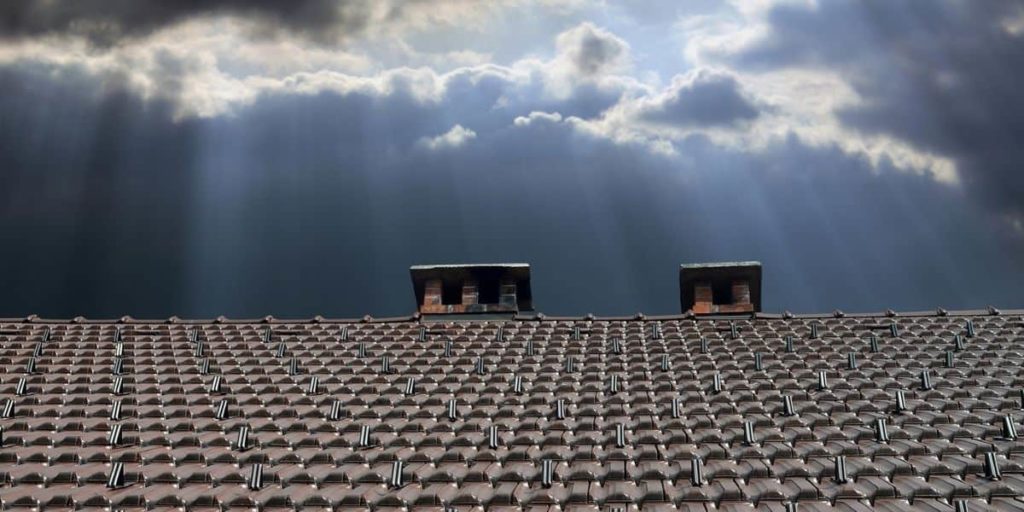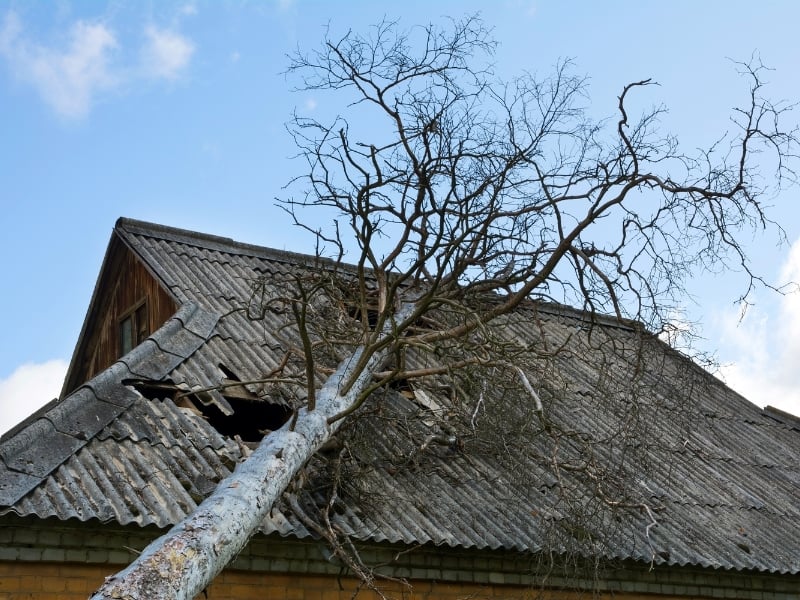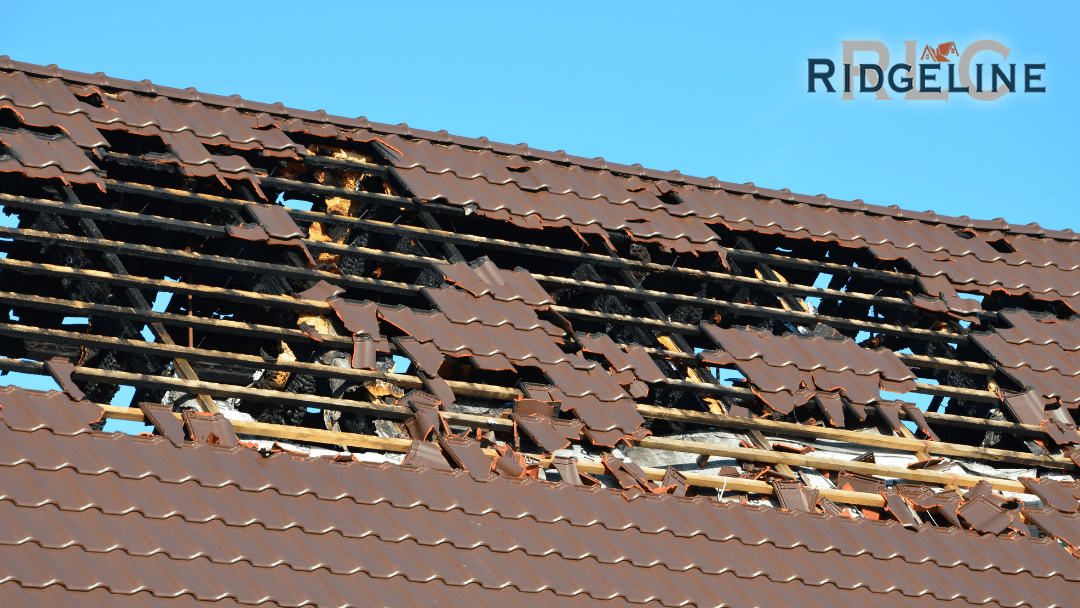It’s been a summer full of storms, and unfortunately, they will happen again. Your roof is built to handle most weather conditions, but some storms are severe enough to cause damage. When this happens, it’s important to take a look at your roof and exterior to see if you have experienced any damage that needs to be fixed. Ignoring potential damage will only cause more issues down the line. The next time a storm strikes, be on the lookout for these 3 signs.

Types Of Damage
Understanding the different types of storm damage is important so that you can give an accurate picture to your insurance company, if necessary. The following are types of damage to look for: water damage, wind damage, hail damage, snow damage, and ice damage.
Safely Examining Damage
Before you start looking for storm damage, it’s important to be safe. Try to identify damage by walking around your home, looking through a window, or using binoculars. Do not attempt to get on your roof unless you are licensed to do so. If you are unable to get a clear picture of the damage, hire a professional to perform an inspection.
6 Things To Look on Your Roof After A Summer Storm
- Check for Missing Shingles: It’s essential to look over your roof after a summer storm has passed, as hail or strong winds may have caused damage to your shingles. Missing shingles can leave your roof vulnerable to leaks and other damage from the elements, so it’s best to check regularly for any lost or damaged shingles. If you notice any missing, you’ll want to get them repaired or replaced as soon as possible.
- Inspect For Leaks: Checking for water damage is another important part of inspecting your roof after a summer storm. If you notice any sagging areas on your ceiling, check them out right away; these could be signs of water coming in through the roof and should be addressed immediately before further damage occurs. You can also quickly inspect the attic space: if there are dark spots on the ceiling or walls that weren’t there before, this could also indicate a leaky roof.
- Check For Broken Gutters and Downspouts: High winds during summer storms can cause debris buildup in gutters and downspouts, leading to broken pieces that need to be fixed or replaced. Make sure nothing is blocking the flow of water off your roof and away from your home’s foundation; if something is preventing water from draining properly, this could lead to serious structural issues in the future. It’s also essential to inspect for any holes or cracks in gutters that could let water seep into surrounding areas.
- Look For Signs Of Tree Damage: Trees near your home can pose danger during summer storms; branches may break off due to wind and rain and land on top of your house damaging it or even creating openings into attics or upper levels of your home. Therefore you must keep an eye out for any branches which may have fallen onto your roof; they should be removed promptly so they don’t cause further damage to the structure of your home.

- Examine The Flashings: Flashing is metal material used around certain protrusions such as vents and chimneys which helps keep moisture out of those areas when installed correctly; however, high winds during storms may shift flashings causing gaps where water could get into spaces it shouldn’t be getting into leading to extensive (and expensive) repair costs down the road if not taken care of quickly enough! Do a visual inspection around all flashings after every storm season and make sure nothing has shifted away from its original position; if so, contact a professional right away who will be able to replace faulty flashing with new material before more severe issues occur later line!
- Test Your Roof Structure: Finally, check the underlying framework beneath your shingles by performing “knock tests”– simply tap gently with a hammer against several parts of the rooftop structure (do not use too much force!) If you hear a hollow sound when tapping, then this indicates that there may be some weakened areas within the framework underneath – these spots should be attended to by professionals immediately before further problems arise!

If you would like your roof inspected or repaired after a storm, the professionals at Ridgeline Construction would love to help you. With years of experience, Ridgeline would be happy to help you with any needs or questions you may have. Be sure to give them a call at (256) 325-1345.
Related Posts:








